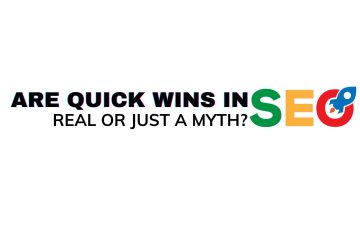Virtual reality (VR) refers to a computer-generated simulation of a three-dimensional environment that can be interacted with using specialized equipment, such as a headset or gloves. It creates a sense of immersion for the user, allowing them to feel as if they are in a different place or situation. Virtual reality has been around for decades, but its application in digital advertising is still relatively new. While some companies have begun experimenting with VR in their advertising campaigns, it is not yet widely adopted. However, interest in VR is growing, and it is expected to play a bigger role in digital advertising in the future.
The Advantages of Virtual Reality in Digital Advertising

Immersive Experience: Virtual reality creates a highly immersive experience for the user, allowing them to fully engage with the advertisement and the brand. This can lead to greater brand recall and better conversion rates.
Increased Engagement: Virtual reality allows for interactive and dynamic advertising, which can lead to increased engagement and longer viewing times. This can make the advertisement more effective and memorable.
Measurable Results: Virtual reality allows for more accurate tracking and measurement of advertising performance, providing valuable data for future campaigns.
Better Targeting: Virtual reality can be used to create targeted advertising experiences, allowing for more personalized and effective campaigns.
Virtual Reality in Action
There have been several successful virtual reality advertising campaigns in recent years. For example, Marriott International created a VR experience that allowed users to “travel” to different destinations, and Coca-Cola used VR to create an immersive vending machine experience. These campaigns have shown the potential for VR to create engaging and memorable advertising experiences.
Virtual reality has been used in various industries, from real estate to automotive. For example, in real estate, VR can be used to give virtual tours of properties, while in automotive, VR can be used to create immersive test drive experiences. These examples illustrate the versatility of VR and its potential for use in different industries and types of advertising.
The Challenges of Virtual Reality in Digital Advertising
Predictions and trends: It is predicted that virtual reality will become increasingly important in the digital advertising industry in the coming years. As technology improves and becomes more accessible, the use of VR in advertising is expected to grow. Additionally, with the increasing popularity of augmented reality (AR) and mixed reality (MR) technologies, it is expected that these will also become prevalent in advertising.
Potential for growth and innovation: The potential for virtual reality in digital advertising is vast and varied. In the future, VR could be used to create fully immersive brand experiences, virtual product demonstrations, and interactive storytelling, among other things.
Impact on the advertising industry: Virtual reality is expected to significantly change the advertising industry. It will allow for more engaging and memorable advertising experiences, and will also provide valuable data for targeting and measuring advertising performance. This will lead to more effective and efficient advertising campaigns, and can also open up new opportunities for brands and businesses to connect with consumers.
The Future of Virtual Reality in Digital Advertising

Predictions and trends: It is predicted that virtual reality will become increasingly important in the digital advertising industry in the coming years. As technology improves and becomes more accessible, VR in advertising is expected to grow. Additionally, with the increasing popularity of augmented reality (AR) and mixed reality (MR) technologies, it is likely that these will also become prevalent in advertising.
Potential for growth and innovation: The potential for virtual reality in digital advertising is vast and varied. In the future, VR could be used to create fully immersive brand experiences, virtual product demonstrations, and interactive storytelling, among other things.
Impact on the advertising industry: Virtual reality is expected to change the advertising industry significantly. It will allow for more engaging and memorable advertising experiences and provide valuable data for targeting and measuring advertising performance. This will lead to more effective and efficient advertising campaigns and open up new opportunities for brands and businesses to connect with consumers.
Conclusion
In conclusion, virtual reality (VR) is a computer-generated simulation of a three-dimensional environment that creates a sense of immersion for the user. While VR has been around for decades, its application in digital advertising is still relatively new. However, interest in VR is growing and it is expected to play a bigger role in digital advertising in the future. The advantages of VR in digital advertising include immersive experiences, increased engagement, measurable results, and better targeting. There have been several successful VR advertising campaigns in recent years, and VR has been used in various industries. The challenges of VR in digital advertising include predictions and trends, potential for growth and innovation, and impact on the advertising industry. The future of VR in digital advertising is expected to be increasingly important as technology improves and becomes more accessible, and as augmented reality (AR) and mixed reality (MR) technologies become more prevalent. Overall, VR has the potential to change the advertising industry by creating more engaging and memorable advertising experiences and providing valuable data for targeting and measuring advertising performance.

Hello, I’m Ali Raza, the brain behind Digital Realm Trends.
Hailing from the vibrant world of digital marketing, I’ve honed my skills over years. Based on my experience, I’m here to unravel the complexities of digital marketing, analytics and paid marketing, crafted for individuals like you. Join me in uncovering the power of digital marketing tools and strategies, fueled by experimentation and insights.




